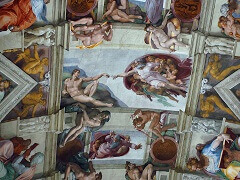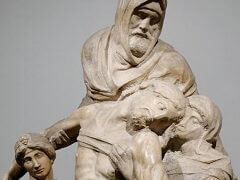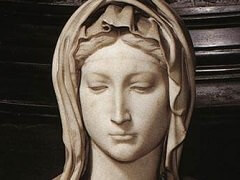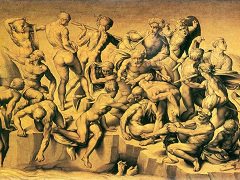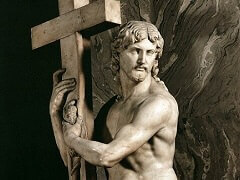Zenobia, Queen of Palmyra by Michelangelo
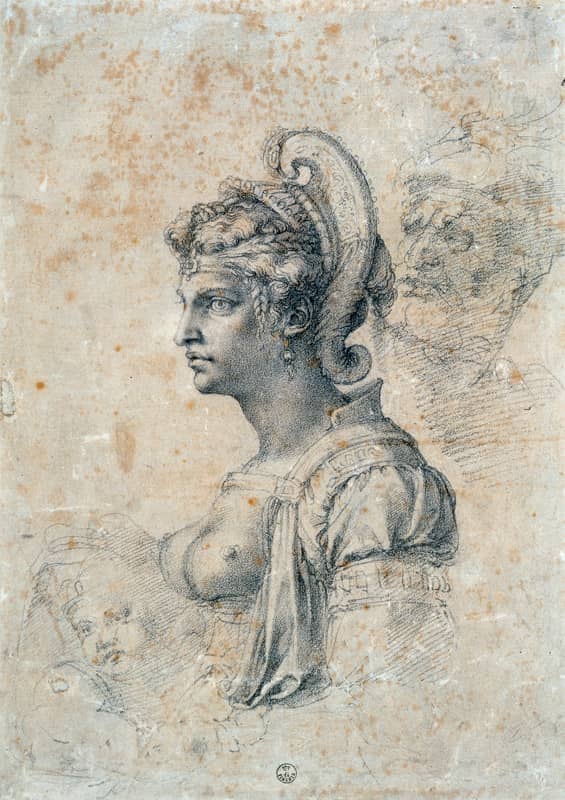
Despite his meticulous attention to the detail and form of the body, Michelangelo most frequently created his faces with idealized features. The artist rarely made portraits or took facial characters from his models, saying that no one would remember the true details of these faces in a thousand years. Instead he preferred to create his version of a perfect or ideal face, with symmetrical, aligned features and Classical beauty. This is typified in the face of David, which itself is reminiscent of Classical statues depicting Greek athletes, and is also demonstrated in the drawing of Zenobia.
Made using charcoal on paper, Zenobia is another example of the drawings that Michelangelo made for Tommaso de' Cavalieri. Facially Zenobia bears much resemblance to the Ideal Head (c. 1533), another drawing which in turn is much like the Ignudi (1508-12) - in the Sistine Chapel. All three are drawn from Michelangelo's ideals of beauty.
Portrayed with exposed and impossibly positioned breasts, Zenobia's face is typical of Michelangelo's women. The masculinity of her features gives Zenobia the appearance of a warrior queen, an impression enhanced by the decoration on her head and her fierce stare.


